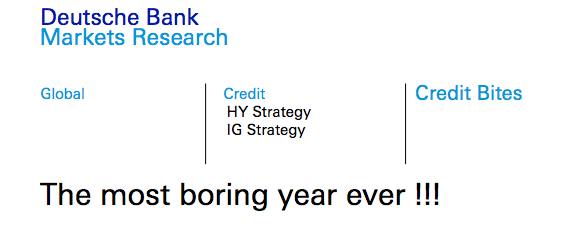I was chatting with an acquaintance the other day about the resilience of credit in the face of multiple political land mines that, under normal circumstances, would have caused spreads on IG and HY to widen materially.
[What? Isn’t that something you talk to your friends about?]
We both agreed that while suppressed equity vol. grabs all the headlines, it is in fact credit’s Teflon performance that wins the John Gotti prize for “most bulletproof asset class.”
Indeed, if you would have correctly predicted every political outcome over the past 12 months and traded accordingly in credit, you would have been wrong every time.
Needless to say, a lot of that has to do with QE. Most notably, the resilience of € credit in the face of all manner of political turmoil can be directly attributed to the overwhelming impact of CSPP.
But again, it isn’t just in Europe. If you want to get a kind of 30,000 foot view of things, look no further than Deutsche Bank’s snapshot of spread ranges as presented in a piece out earlier this year amusingly called “The Most Boring Year Ever!”

“While volatility is depressed across the board, credit volatility seems particularly low; compared to history as well as relative to other assets,” BofAML writes, in a great note out on Thursday.
And while “a low spread regime is usually accompanied by low volatility, similar to the relationship between high equity valuations and stock vol,” the bank reminds you that “implied volatility for CDX over the last year has touched new lows even though spreads themselves have struggled to reach their post-crisis tights.”
Have a look:

What’s particularly interesting here is the divergence between VVIX (equity vol of vol) and IG implied vol.

“This state of affairs can be attributed to the high realized vol of VIX,” BofAML writes, adding that “the frequent occurrence of sharp, short-lived shocks justifies a high vol of vol, but we are yet to see such behavior in credit spreads.”













Leave A Comment